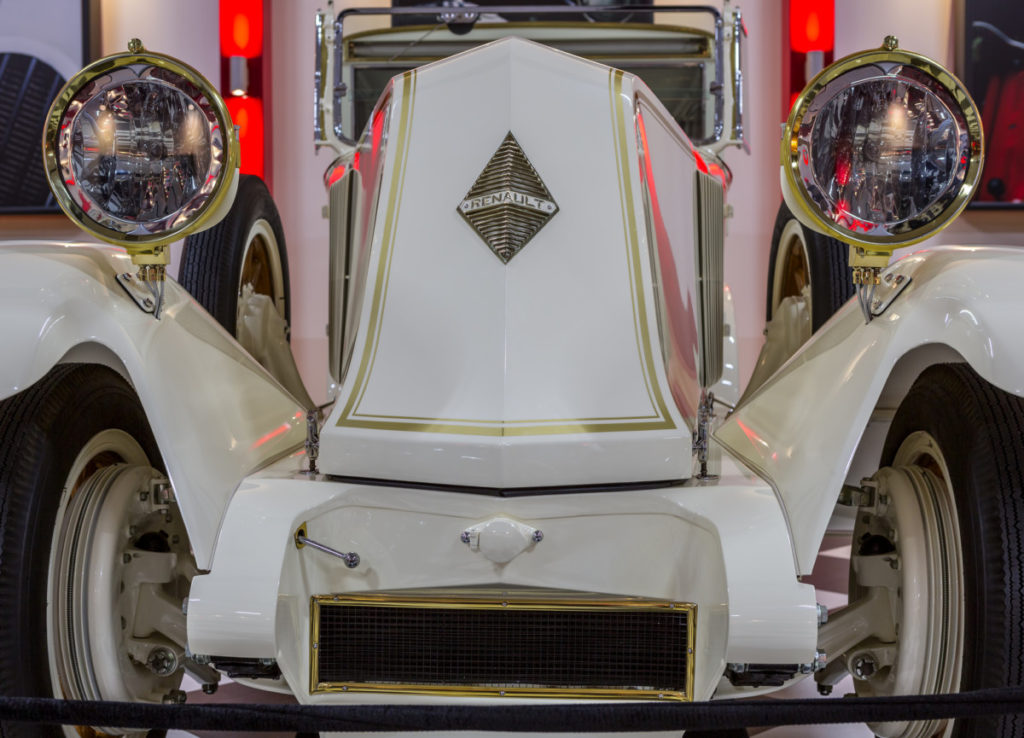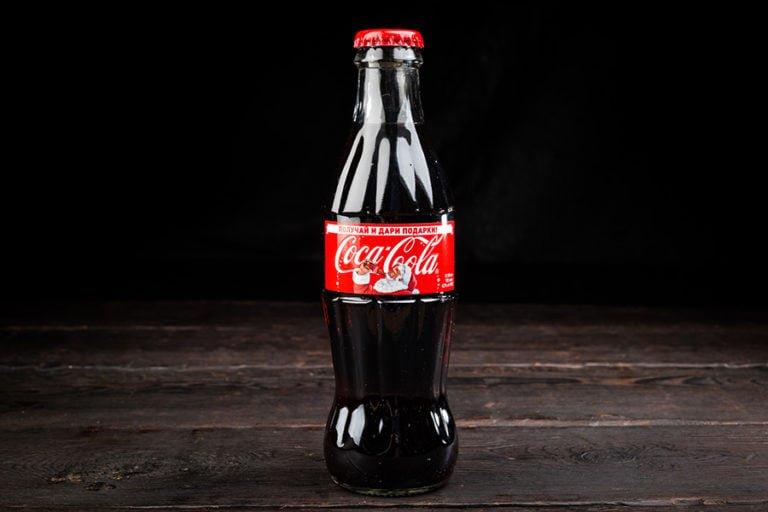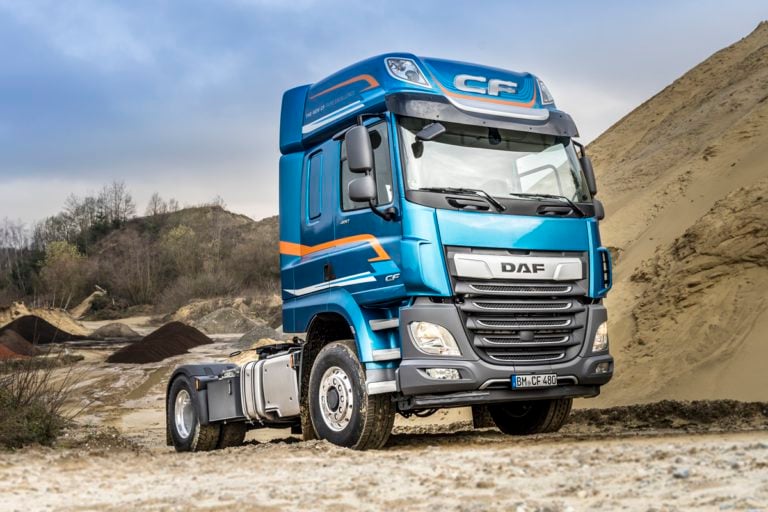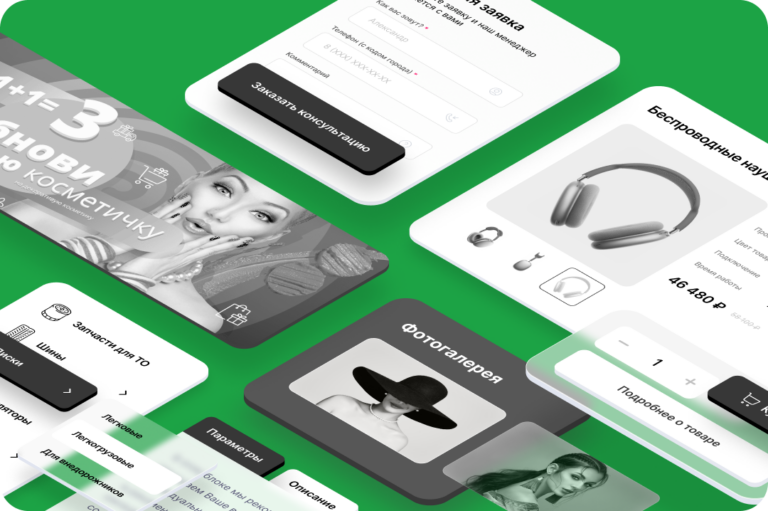Which of the lovers of the “four wheels” does not know the characteristic symbol imitating a diamond? This is the symbol of the brand Renault – a company founded in 1899 in Billancourt near Paris.
The main initiator of this undertaking was Louis Renault, who convinced the brothers Marcel and Fernand to cooperate. Consequently, the company initially operated as a company – Societe Renault Freres. It is worth noting here that Louis built his first car a year earlier.

The company developed very dynamically, because in 1902 the brothers patented their first engine and decided to join the fight in motorsport. They thought it would be a great advertisement for their company. Unfortunately, this decision turned out to be tragic for Marcel Renault, who died on the track during the Paris-Madrid race in 1903. Three years later, Fernand Renault left the company. The immediate reason for his decision was health problems. Their consequence was the death of the second brother in 1909. Louis was left alone and decided to change the name of the company to Les Automobiles Renault.
As for the Renault brand, it was strongly influenced by the history of the First World War. The company gained great fame due to the fact that Parisian taxis (Renault cars) were used by the military. By car, French soldiers were taken to the Marne, where one of the most fierce battles with the Germans took place. In addition, Louis Renault at that time produced transport vehicles, tanks, ammunition and even aircraft. Thanks to this, after the end of hostilities, he received the honorary title of Knight of the Legion of Honor.
During the interwar period, production at the company’s factories developed rapidly, as the 6CV model rolled off the assembly line four years after the war. In the 1930s they were joined by Renault Viva Grand Sport and Nervastella. At the turn of the 1920s and 1930s, the production of new cars amounted to more than 40,000 units, and the first bus projects were also launched.
During World War II, the Renault factories fell into the hands of the German invaders. Thus, the enterprise was supposed to produce tanks and other military equipment for the Third Reich. It is worth noting here that production was deliberately delayed so that as little equipment as possible fell into the hands of the enemy. The founder of the brand himself then worked on the design of the 4CV model (finally presented in 1947). However, over time, Louis Renault was arrested on charges of collaborating with Germany and died in prison in 1944. Pierre Lefochoux became the new head of the company, and the Renault factories were nationalized.

The post-war period is a new chapter in the history of the brand. Three years after the end of hostilities, 40,000 people worked at Renault factories, and 96,000 cars rolled off the assembly lines. In 1951, the latest model appeared on the market – the Renault Fregate, and a few years later the Renault Dauphine made its debut. The breakthrough year was 1961, thanks to the Model 4. It was the brand’s first front-wheel drive car, which also featured a modern pressurized cooling system. In turn, 1965 proved to be a successful year for the 16, which was awarded the prestigious title of Car of the Year.
The 1970s were marked by the debut of the “12”, “15”, “17” models and, above all, the start of production of the famous “5”. It was a remarkable success, as evidenced by the fact that these vehicles were produced until the 1990s. The Renault 9 entered production in the early 1980s, and the Renault Escape, the first single-bodied car, appeared in the mid-1980s. However, one of the company’s most successful periods was the turn of the 1980s and 1990s. Then, in 1989, the famous “19” and Renault Clio went into production, and the iconic Renault Magnum model was launched in truck factories. The acquisition of the Romanian company Dacia in 1999 also testifies to the development of the Renault brand. In addition, the French manufacturer owns 43% of the Japanese brand Nissan.
Renault models
Due to the fact that the French concern has been systematically gaining recognition in the eyes of customers over the years, it has become one of the most purchased brands. The manufacturer’s offer includes several models that will satisfy even the most demanding customers. Which?
- Captur is a model that the French concern launched on the market in 2013. Six years later, it was decided to introduce the second generation of this car.
- Clio is the brand’s flagship model, present on the automotive market since 1990. The fifth generation of this model, which was presented at the Geneva Motor Show in 2019, is currently being produced.
- Escape – Its origins date back to the mid-1980s. Since 2014, the French have been producing the fifth version of this model, which has become a higher-class crossover.
- Qajar is a Renault crossover. Its name comes from the words “cad” in the word “quad-core” and “jar”, which means “reflexive”. This is a kind of replacement for the first generation of another model – Koleos.
- Koleos – the second generation of this model is currently on the market, classified as a mid-range SUV. It shows some resemblance to other models from the French brand, including Talisman, Espace or Megane.
- Megane – An extremely popular model of the French brand, whose drivers have been driving for 25 years. Renault is currently producing the fifth version of this compact car.
- Scenic is an iconic Renault model that has been on the market since 1996. The current, fourth version was presented in 2016 at the Geneva Motor Show.
- Talisman is Renault’s mid-range car, available in five trim levels. On the roads you can meet the Talisman sedan and station wagon.
- Twingo – Since 2014, the third generation of A-segment vehicles has been produced. The production site is the Renault plant located in Nove Mesto, Slovenia.
- In addition, Renault offers vehicles for delivery. Among them are models: Kangoo, Trafic and Master. It is worth adding that all these 3 models are also available in the passenger version.
Pros and cons
Like any brand, Renault has a huge number of fans. The popularity of these French cars is primarily due to the original style of the cars, but also to their good resistance to corrosive changes. Renault’s popularity is also unabated thanks to its constant presence in motorsport. When we look at the Renault brand, accessories and parts are another argument in favor of buying these cars because they are not too expensive.

Over the years, the French company has produced many iconic cars, among which the “19” or Clio took the lead. Unfortunately, there were also some serious failures. In particular, the second generation of models such as Renault Laguna and Renault Megane performed very poorly in terms of quality. Although the company decided to quickly respond to negative reviews with new generations of cars, some four-wheel drive users still felt disgusted with the products of the French brand.
Renault is trying to adapt to the requirements of today’s market, offering a range of different models that will meet the expectations of almost all buyers. Starting with the smallest Twingo, through Clio or Megane, and ending with the huge Renault Espace. It is important to note that Renault’s development and openness to customers concerns not only car users in Europe, but also on other continents. The best example of this is the launch of the Renault Kwid, which is hardly seen on the roads of the “Old Continent”. The car appeared on the Indian market in 2015, and appeared in Brazil two years later.
The French brand Renault is not limited to diesel or petrol models such as the Renault Clio, Megane or Scenic. Renault powered by electricity is a novelty that successfully wins the hearts of drivers. A classic example is a car with 100% electrical equipment – the Zoe model. 135 hp engine and modern design – not all the advantages of this car. The battery in the car has 52 kWh, so we can drive up to 395 kilometers on a single charge. Unfortunately, the car is not cheap. However, with the current trends of abandoning the “classic” fuel, the idea of acquiring such a car seems to be the most profitable.














